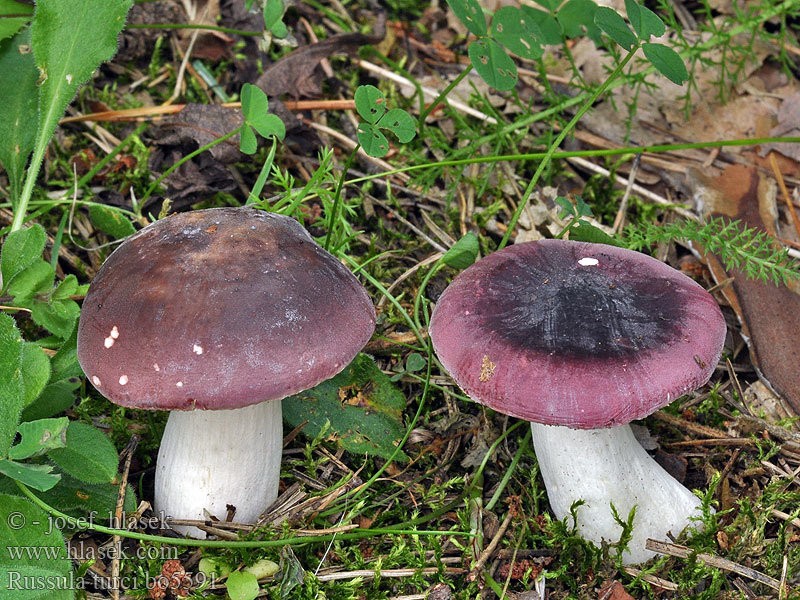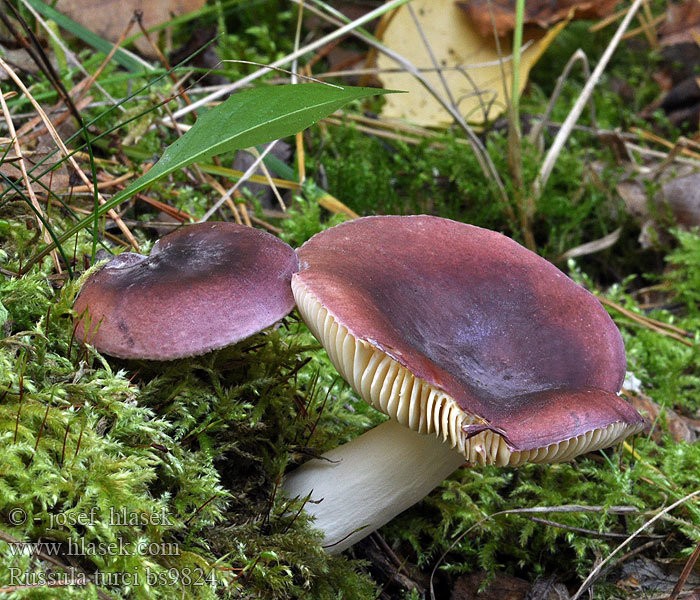Russula Turkish (Russula turci)
- Division: Basidiomycota (Basidiomycetes)
- Subdivision: Agaricomycotina (Agaricomycetes)
- Class: Agaricomycetes (Agaricomycetes)
- Subclass: Incertae sedis (of uncertain position)
- Order: Russulales (Russulovye)
- Family: Russulaceae (Russula)
- Genus: Russula (Russula)
- Type: Russula turci (Turkish Russula)
- Russula murrillii;
- Russula lateria;
- Russula purpureolilacina;
- Syrian Turko.

Turkish russula (Russula turci) – a mushroom belonging to the Russula family, is included in the genus Russula.
The fruiting body of Turkish russula is hat-legged, characterized by dense white pulp, which becomes yellow in mature mushrooms. Under the skin, the flesh gives off a lilac hue, has a sweetish aftertaste and a pronounced smell.
The stem of the fungus has a cylindrical shape, sometimes it can be club-shaped. Her color is more often white, less often it can be pink. In wet weather, the color of the legs has a yellowish tint.
The diameter of the cap of the Turkish russula varies between 3-10 cm, and its initially convex shape becomes flattened, depressed as the fruiting bodies ripen. The color of the cap is often lilac, it can be saturated purple, purple-brown or gray-violet. Covered with a slimy, shiny skin that can be easily removed.
The Turkish russula hymenophore is lamellar, consists of frequent, gradually diverging plates, slightly adhering to the stem. initially their color is cream, gradually becoming ocher.
The spore powder of Turkish russula has an ocher tint, contains ovoid spores with dimensions of 7-9 * 6-8 microns, the surface of which is covered with spines.

Turkish russula (Russula turci) is widespread in the coniferous forests of Europe. Able to form mycorrhiza with fir and spruce. It occurs in small groups or singly, mainly in pine and spruce forests.
Turkish russula is an edible mushroom characterized by a pleasant aroma and not a bitter taste.
Turkish russula has one similar species called Russula amethystina (Russula amethyst). It is often considered a synonym for the described species, although in fact both of these fungi are different. The main difference between Turkish russula in relation to Russula amethystina can be considered a more pronounced spore network.









